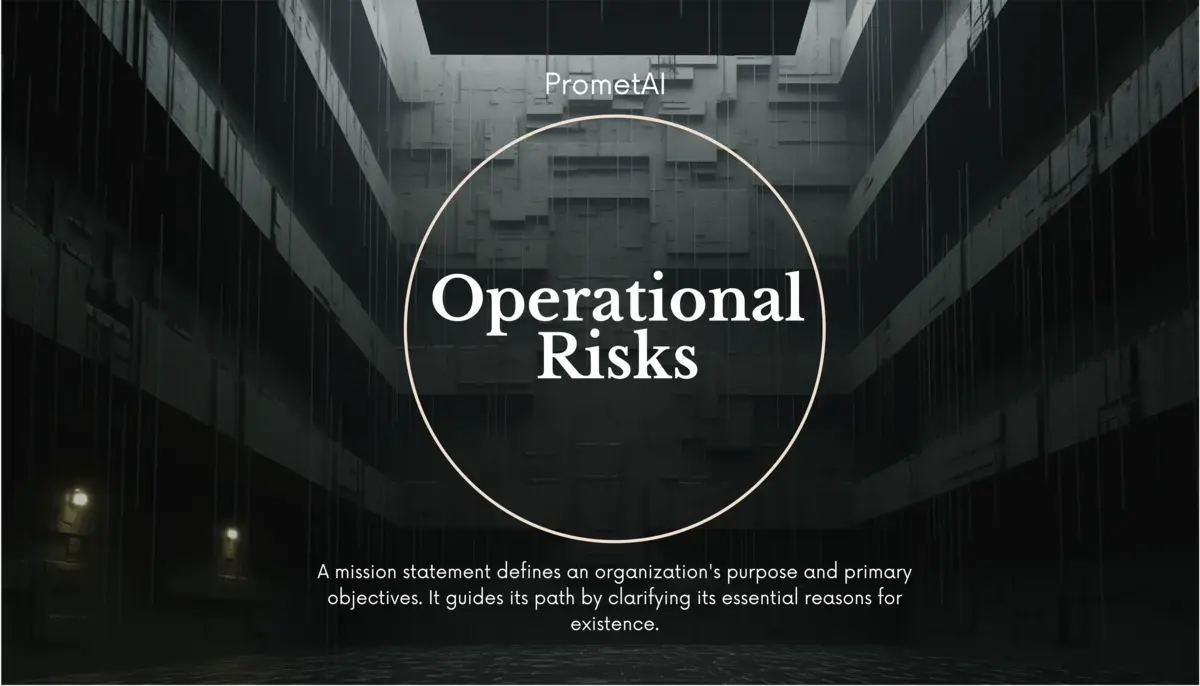Operational Risks are the risks that a business faces in its regular operational activities, which can lead to financial loss or damage to the company's reputation. These risks can stem from various sources such as internal processes, people, systems, or external events.
Operational Risks
Learning Materials
The operational risk definition refers to potential financial losses or reputational damage arising from internal processes, people, systems, or external events. Common sources include technological failures, human error, process inefficiencies, cybersecurity threats, and regulatory compliance issues. When not managed proactively, these risks can negatively impact profitability, customer satisfaction, and compliance with industry standards. Understanding and managing these risks are crucial for business continuity and stability.
Recognizing sources of operational risks like technology failures and human errors is crucial for effective mitigation.
Implementing strong controls and risk management strategies helps minimize financial and reputational damage.
Adhering to regulatory standards reduces legal penalties and builds stakeholder trust.
Regularly reviewing risk strategies ensures adaptability to changing business environments and emerging threats.
Educating staff about potential risks encourages a culture of awareness and proactive response.
Types of Operational Risks
Different types of operational risks pose unique challenges to businesses. Here are the key types:
Technological Failures: System malfunctions, software glitches, and data breaches can disrupt business operations.
Process Inefficiencies: Ineffective procedures and workflows can result in costly delays and errors.
Human Error: Mistakes made by employees due to lack of training or oversight may lead to financial losses.
Regulatory Compliance Issues: Non-compliance with industry standards and laws can incur legal penalties.
Supply Chain Disruptions: External vendor problems or logistical issues can impact product delivery.
Cybersecurity Threats: Hacking attempts and data theft pose significant risks to sensitive company information.
What is Operational Risk Management?
Operational risk management involves identifying potential risk factors, assessing their likelihood and impact, and implementing appropriate controls. Key risk management strategies include deploying robust mitigation measures to maintain business continuity and stability. This proactive approach helps minimize financial losses and reputational damage. Regularly reviewing and updating these strategies is essential to adapt to the changing dynamics of internal operations and external environments. By fostering a culture of risk awareness and resilience, companies can respond effectively to new challenges and emerging threats.
PrometAI’s Operational Risk Examples
At PrometAI, we recognize several examples of operational risks that could impact our business continuity. Here are key operational risk examples we manage:
Technological Risks: Our reliance on advanced AI technologies means any technological failure or data breach could disrupt our operations.
Compliance Risks: As a fintech company, we adhere to strict regulations. Non-compliance could result in legal penalties and reputational damage.
Human Resource Risks: The loss of skilled personnel or poor team management could impede progress and innovation.
Process Risks: Inefficiencies in our processes can lead to reduced productivity and customer dissatisfaction.
Supply Chain Risks: Dependence on external vendors for services poses risks in case of disruptions or quality issues.
To counter these risks, we have implemented strong technology infrastructure, regular compliance audits, efficient HR practices, process optimization strategies, and solid vendor management policies. Continuous monitoring and proactive risk management are integral to our strategy.